第3章
But unless those conditions are present, the work of deciding cases in accordance with precedents that plainly fit them is a process similar in its nature to that of deciding cases in accordance with a statute.It is a process of search, comparison, and little more.Some judges seldom get beyond that process in any case.Their notion of their duty is to match the colors of the case at hand against the colors of many sample cases spread out upon their desk.The sample nearest in shade supplies the applicable rule.But, of course, no system of living law can be evolved by such a process, and no judge of a high court, worthy of his office, views the function of his place so narrowly.If that were all there was to our calling, there would be little of intellectual interest about it.The man who had the best card index of the cases would also be the wisest judge.It is when the colors do not match, when the references in the index fail, when there is no decisive precedent, that the serious business of the judge begins.He must then fashion law for the litigants before him.In fashioning it for them, he will be fashioning it for others.The classic statement is Bacon's: "For many times, the things deduced to judgment may be meum and tuum, when the reason and consequence thereof may trench to point of estate." 13 The sentence of today will make the right and wrong of tomorrow.If the judge is to pronounce it wisely, some principles of selection there must be to guide him among all the potential judgments that compete for recognition.
In the life of the mind as in life elsewhere, there is a tendency toward the reproduction of kind.Every judgment has a generative power.It begets in its own image.Every precedent, in the words of Redlich, has a "directive force for future cases of the same or similar nature." 14 Until the sentence was pronounced, it was as yet in equilibrium.Its form and content were uncertain.Any one of many principles might lay hold of it and shape it.Once declared, it is a new stock of descent.It is charged with vital power.It is the source from which new principles or norms may spring to shape sentences thereafter.If we seek the psychological basis of this tendency, we shall find it, I suppose, in habit.15 Whatever its psychological basis, it is one of the living forces of our law.Not all the progeny of principles begotten of a judgment survive, however, to maturity.Those that cannot prove their worth and strength by the test of experience are sacrificed mercilessly and thrown into the void.The common law does not work from pre-established truths of universal and inflexible validity to conclusions derived from them deductively.Its method is inductive, and it draws its generalizations from particulars.The process has been admirably stated by Munroe Smith:
"In their effort to give to the social sense of justice articulate expression in rules and in principles, the method of the lawfinding experts has always been experimental.The rules and principles of case law have never been treated as final truths, but as working hypotheses,continually retested in those great laboratories of the law, the courts of justice.Every new case is an experiment; and if the accepted rule which seems applicable yields a result which is felt to be unjust, the rule is reconsidered.It may not be modified at once, for the attempt to do absolute justice in every single case would make the development and maintenance of general rules impossible; but if a rule continues to work injustice, it will eventual】y be reformulated.The principles themselves are continually retested; for if the rules derived from a principle do not work well, the principle itself must ultimately be re-examined." 16
The way in which this process of retesting and reformulating works may be followed in an example.Fifty years ago, I think it would have been stated as a general principle that A.may conduct his business as he pleases, even though the purpose is to cause loss to B., unless the act involves the creation of a nuisance.l7 Spite fences were the stock illustration, and the exemption from liability in such circumstances was supposed to illustrate not the exception, but the rule.18 Such a rule may have been an adequate working principle to regulate the relations between individuals or classes in a simple or homogeneous community.With the growing complexity of social relations, its inadequacy was revealed.As particular controversies multiplied and the attempt was made to test them by the old principle, it was found that there was something wrong in the results, and this led to a reformulation of the principle itself.Today, most judges are inclined to say that what was once thought to be the exception is the rule, and what was the rule is the exception.A.may never do anything in his business for the purpose of injuring another without reasonable and just excuse.19 There has been a new generalization which, applied to new particulars, yields results more in harmony with past particulars, and, what is still more important, more consistent with the social welfare.This work of modification is gradual.
It goes on inch by inch.Its effects must be measured by decades and even centuries.Thus measured, they are seen to have behind them the power and the pressure of the moving glacier.